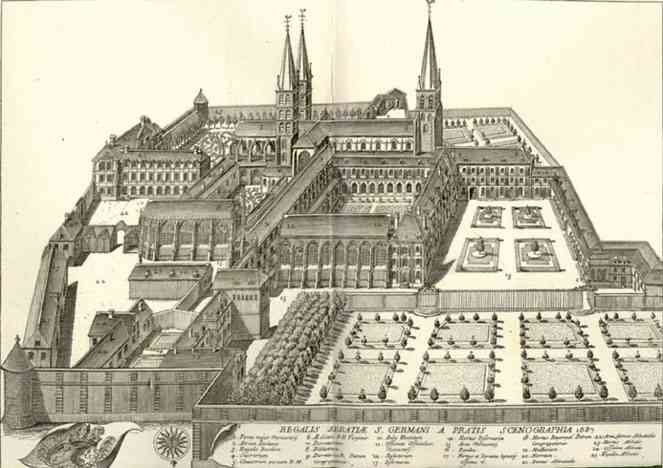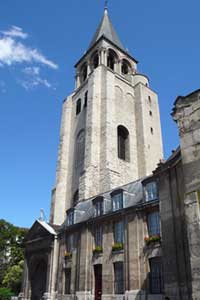The area of St Germain des Prés is absolutely saturated with historical importance ranging from being home to the oldest church in Paris and the testing place of the guillotine to boasting cafes that were the birth place of existentialism.
The area comprises of 17th century shopping arcades and bustling cobbled streets interrupted by Boulevard Saint-Germain, the most important part of Haussman's renovation of Paris.

The Abbey started life as the burial place of Merovingian kings of Nuestria. Slightly obscure, we know. The Merovingians were a powerful dynasty that ruled the Franks in the middle of the 5th century.
They, like most large family dynasties, loved a bit of in-fighting and so their politics used to lead to civil to warfare.
The abbey was originally founded by Childebert I, son of Clovis I, as a shrine to house relics and this is where sources diverge. Some people say that the abbey was built in honor of Saint Vincent to house the Saint's relics that Childebert had won in battle in Saragossa.
Others add a jewel encrusted cross that was supposedly made for King Solomon to the booty to be found in the abbey. Alternatively it has been reported that a shard of wood from Jesus's cross was the relic that inspired Childebert to build the abbey.
Whatever the relic, we do know that in 558, on the same day that Childebert I died, the church was dedicated by Germain, Bishop of Paris. The church and its monastery began to grow in power and influence and was soon the richest in France. After the death of bishop Germain, its name was changed to Saint Germain des Prés.
After the 16th century the area became very popular amongst fashionable and wealthy aristocrats who were looking to build homes. Over time the Saint-Germain became part of the bustling city.
The Revolution in 1789 signals the end for the powerful Benedictine Abbey. Some one came up with the bright idea of using the abbey to store gunpowder which predictably resulted in an explosion in 1793. The entire rectory was destroyed.

There is an aura of mystery surrounding Les Deux Magots. It is a mystery that comes from a past that has been deeply entangled with intellectual and literary brilliance. Lots of Parisian districts boast of being, at one time or another, the centre of the intellectual world, or the hub of bohemian life, but St Germain des Prés has a unique claim to fame: existentialism.
In 20th century Paris it was not Montmartre or Montparnasse that was synonymous with literary and artistic life, but St Germain des Prés.
There were three cafes in particular that became a magnet for the best artistic and intellectual minds around. Le Flore, Les Deux Magots and Le Lipp were the holy trinity of the intellectual world. In 1939 Léon-Paul Fargue wrote in all seriousness "the square in fact lives, breathes, palpitates and sleeps by virtue of three cafés as famous today as State institutions".
Just before, after and during the Second World War, St Germain des Prés was the center of the world.
After the Liberation, Saint-Germain's profile just seemed to grow and grow. It became world famous for its nightlife: smoke-filled cellar bars filled with New Orleans Jazz and the Be Bop provided the perfect meeting point for young bohemians.
They called themselves 'existentialists' - Sartre's precious philosophy was hijacked by a young, fashionable crowd looking for some credibility. Needless to say, he was not best amused by this.